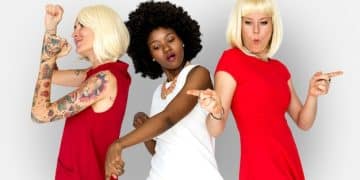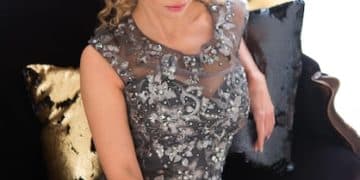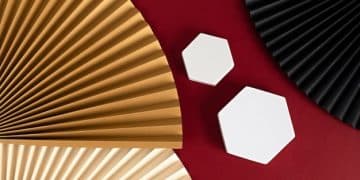Red Carpet Trends: How Award Show Fashion Drives US Retail Sales
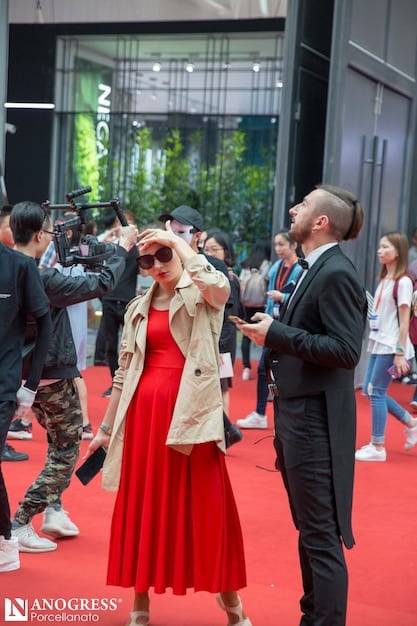
Anúncios
Red carpet events significantly influence US retail sales as trends showcased by celebrities often drive consumer demand for similar styles, accessories, and beauty products.
The glitz and glamour of award shows extend far beyond the red carpet. In the US, what celebrities wear can significantly impact retail sales, making these events a crucial barometer for emerging fashion trends and a powerful marketing opportunity.
Anúncios
The Red Carpet as a Trend Incubator
Award shows are not just about celebrating artistic achievements; they’re also a major stage for designers and a source of inspiration for consumers. The styles seen on the red carpet often foreshadow upcoming trends in fashion, beauty, and even lifestyle.
The immediacy of social media amplifies this effect, allowing trends to spread rapidly and influence purchasing decisions.</ How do these fleeting moments of glamour transform into tangible sales figures?
Anúncios
Instant Visibility and Social Media’s Role
In the digital age, the red carpet’s influence is accelerated by social media. Images and videos are shared instantly, creating a buzz around certain styles or designers. This visibility can lead to a surge in online searches and, ultimately, sales.
- Real-time Influence: Trends go viral within minutes of appearing on the red carpet.
- Social Media Amplification: Platforms like Instagram and Pinterest become visual trend boards.
- Celebrity Endorsements: Stars indirectly endorse products by wearing them.
- Measurable Impact: Brands track social media mentions and website traffic during and after events.
The ripple effect is significant, with smaller brands and retailers often adapting these high-fashion moments into more accessible everyday wear.
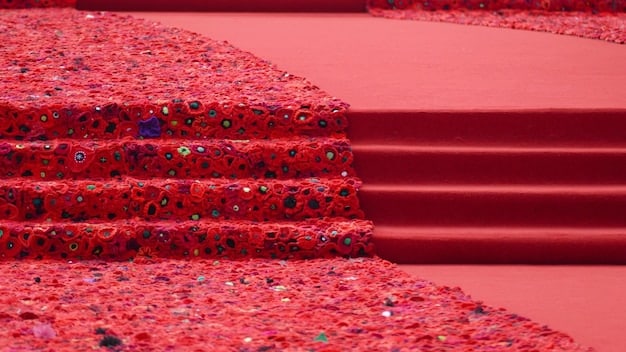
Decoding the Red Carpet: Key Trend Indicators
Identifying trends from the red carpet requires a keen eye and understanding of current fashion landscapes. Key indicators include color palettes, silhouette preferences, and the resurgence of vintage styles. Retailers and consumers closely analyze these aspects.
Understanding these elements allows both the industry and the public to gauge where fashion is headed, influencing inventory and personal style choices.
Color Palettes and Material Choices
The colors and materials seen prominently on the red carpet often trickle down into mainstream fashion. Specific shades gain popularity, driving demand for clothing, accessories, and even home décor in those hues.
Luxe fabrics and innovative textures are also immediately noticed, paving the way for more affordable alternatives to emerge in retail markets.
Silhouette and Style Directions
Silhouettes, such as the A-line dress or the tailored suit, along with style directions, like minimalist or maximalist aesthetics, can significantly impact purchasing decisions. Retailers watch which styles resonate with the public, and then adjust their collections accordingly.
Classic shapes get a modern makeover, whilst edgier, more avant-garde styles find their niche and influence more daring consumers.
Quantifying the “Red Carpet Effect” on Retail
Measuring the precise impact of red carpet fashion on retail sales is challenging, but studies and market analyses provide insights into the correlation between celebrity endorsements and consumer behavior. Data reveals spikes in sales following major award shows.
The real work is in the numbers, assessing how much revenue can be attributed to red carpet exposure.
- Post-Event Sales Surge: Retailers often report an increase in sales of items similar to those seen on the red carpet.
- Brand Recognition: Emerging designers gain significant exposure, leading to long-term brand growth.
- Consumer Spending Patterns: Award shows influence consumer desires and subsequent spending habits.
- Data Analysis: Market research firms analyze sales data to identify specific trends driven by red carpet events.
This has led to a better understanding of when certain items are expected to become best-sellers.
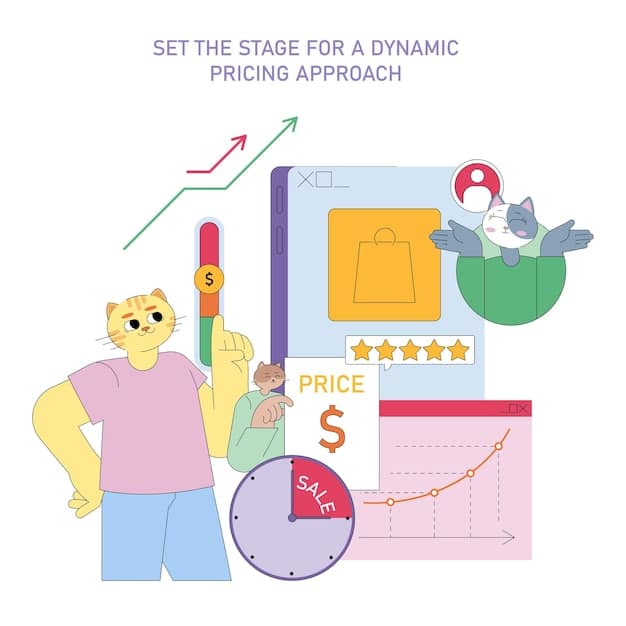
Retail Strategies: Capitalizing on Award Show Trends
For retailers, staying agile and responsive to red carpet trends is essential. Strategies include influencer collaborations, themed collections, and targeted marketing campaigns timed to coincide with major award shows.
Being able to quickly turn the tides and move with emerging trends is a surefire way to stay ahead.
Influencer Marketing and Collaborations
Partnering with influencers to promote red carpet-inspired looks is a common strategy. Influencers can provide styling tips, product recommendations, and create engaging content that drives sales.
This allows retailers to get their products directly in the hands of those who can best represent the products, leading to maximum impact.
Themed Collections and Pop-Up Shops
Creating collections inspired by the red carpet can attract consumers looking to emulate celebrity styles. Pop-up shops and exclusive product launches generate excitement and urgency, further boosting sales.
These offer consumers the exclusive chance to capture some of the magic seen on the red carpet for themselves.
Challenges and Considerations for Retailers
While capitalizing on red carpet trends presents opportunities, retailers face challenges such as managing inventory, ensuring ethical sourcing, and adapting to fast-changing consumer preferences. Sustainability and inclusivity are also important considerations.
These issues can be a real hurdle, but it is important to not only focus on the short term gains, but long term impact as well.
- Inventory Management: Balancing trending items with core product lines.
- Ethical Sourcing: Addressing concerns about labor practices and environmental impact.
- Sustainability: Offering sustainable alternatives to fast-fashion trends.
- Inclusive Sizing: Catering to a diverse range of body types and sizes.
It is paramount that retailers remain mindful of ethical concerns and consumer expectations.
The Future of Red Carpet Influence
As technology evolves, the way red carpet trends impact retail sales will continue to change. Virtual fashion shows, augmented reality shopping experiences, and personalized styling recommendations are emerging trends that could reshape the industry.
These developments promise a more immersive and instantaneous translation of high-fashion moments into accessible consumer choices.
Virtual Fashion and AR Shopping
Virtual fashion allows consumers to “try on” clothing and accessories from the red carpet using augmented reality. This technology can enhance the online shopping experience and reduce return rates.
It provides unprecedented access to a personalized shopping experience from the comfort of the user’s home.
Personalized Styling and AI Recommendations
AI-powered styling tools can provide personalized recommendations based on individual preferences and body types. These tools can help consumers find red carpet-inspired looks that suit them, driving sales for retailers.
This allows retailers to offer a unique, tailor-made experience to their customer base.
| Key Point | Brief Description |
|---|---|
| ✨ Trend Forecasting | Red carpets showcase emerging trends influencing consumer choices. |
| 🚀 Social Media Impact | Social platforms amplify trends immediately, driving online searches. |
| 🛍️ Retail Strategies | Retailers use influencer marketing and themed collections to capitalize. |
| 🔮 Future Trends | Virtual fashion and AI styling are reshaping retail influence. |
Award Show Trends and Retail Sales
▼
Red carpet trends can impact retail sales almost immediately, thanks to social media and online shopping. Viral looks often lead to a surge in searches and sales within hours or days.
▼
Retailers use strategies like influencer collaborations, themed collections, and targeted marketing campaigns to take advantage of red carpet trends. These help in quickly adapting to consumer demands.
▼
Yes, sustainable options are increasingly available. Ethical sourcing and eco-friendly materials are gaining popularity, as consumers demand more sustainable fashion choices inspired by these trends.
▼
Virtual fashion and AR shopping allow consumers to “try on” clothes and accessories virtually, thus enhancing the online shopping experience. This can reduce return rates by providing a more accurate fit assessment.
▼
AI-powered styling tools provide personalized recommendations based on individual preferences and body types, helping consumers find red carpet-inspired looks that they’ll feel confident wearing.
Conclusion
In conclusion, the correlation between award show fashion and US retail sales is undeniable. By understanding the key trend indicators, implementing agile retail strategies, and embracing technological advancements, retailers can effectively leverage the red carpet effect to drive sales and stay ahead in the competitive fashion industry.
